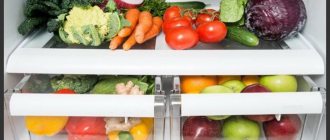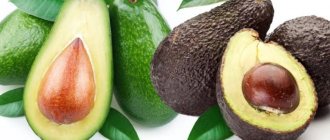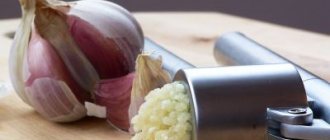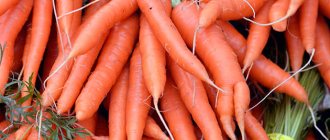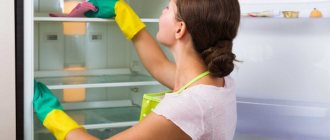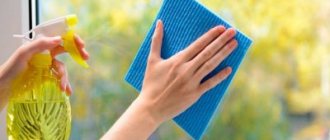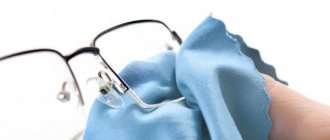We have all been taught since childhood that we need to wash fruits and vegetables before eating. But at the same time, each family processes them differently. Some people rinse with water, others scald them, others wash them with soap, and others use special products. How to act correctly so as not to eat bacteria or viruses along with healthy food?
How are fruits and vegetables processed?
On the shelves of grocery stores and supermarkets there are a lot of vegetables, fruits, herbs and berries supplied from abroad, which have a very attractive appearance.
It is worth noting that imported products are treated with special compounds in order to increase shelf life and give them a marketable appearance. Eating such fruits without first cleaning is dangerous to health, so you should know how to properly wash fruits and vegetables so that no chemicals, as well as various germs and dust remain on their surface. Even if fruits and root crops were grown in your own garden, they still need to be freed from contamination and must be rinsed. To extend the shelf life and give a glossy shine to apples, tomatoes, citrus fruits and other crops, wax and sulfur dioxide are used - substances that cannot be eaten. In order to protect against parasites, insects and mold, products are treated with biphenyl, fungicides, chemicals classified as carcinogens.
To remove all these harmful substances, simply rinsing under water and wiping with a cloth is not enough. To be sure that the fruits are safe, they need to be washed more thoroughly.
More details
Vegetables, fruits, herbs and nuts are indeed treated with different substances: in order for a good harvest to grow, they use fertilizers, to get rid of pests - pesticides, to deliver them to stores in salable form and keep them on the counter - special wax.
Fertilizers are commonly feared because they can increase levels of nitrates and nitrites in vegetables and herbs, compounds with potentially carcinogenic effects. But there is much more evidence that these same substances in vegetables can be beneficial. Thus, beet juice, rich in natural nitrates, lowers blood pressure, and nitrites promote the formation of nitric oxide (NO), a compound that has a beneficial effect on blood vessels. So you shouldn’t be afraid of nitrites from plants, especially since you won’t be able to influence their level anyway: this is only possible at the growing stage.
With pesticides, things are a little more complicated. They are indeed potentially toxic to humans. However, those that are approved for use today are safe - as long as you do not exceed a certain dose. Agricultural workers are at risk, while others receive very small amounts of pesticides. Some of these residues can be removed from the surface of the product by simply washing it in plain water. Soaking in a baking soda solution may be even more effective. However, a small amount of pesticides penetrates into the fruit, so it will not be possible to completely get rid of them. By the way, products from organic farms may also contain pesticide residues.
The situation is different with wax. You can get rid of it by simply cutting off the peel. But is it necessary to do this? Wax appears on fruits during the process of waxing - applying a special composition that prevents them from ripening too quickly, rotting and molding during transportation or storage. It also makes it shiny and bright. Medical organizations consider waxing safe. But there are suggestions that wax helps pathogenic microbes survive on the surface. Thus, in one study, salmonella survived longer on cucumbers treated with natural wax. But another looked at the survival rate of listeria on waxed apples and noticed no difference. So far, the ability of wax to preserve microbes is only a theory.
But it is pathogenic microbes, or more precisely, the food poisoning caused by them, that is the main threat that we prevent by washing. E. coli, salmonella and listeria can be on the surface of a variety of foods, from tomatoes and lettuce to strawberries. The mere presence of bacteria on a product does not necessarily lead to food poisoning. Whether it happens or not depends on the number of bacteria, as well as on our own immunity: the risk is higher in pregnant women, children, the elderly, people with chronic diseases or weakened immune systems.
Typically, pathogenic microbes get onto the surface of food due to organic fertilizers, contaminated irrigation water or soil. Sometimes cross-contamination occurs: microbes from one product are transferred to another. How long they remain on the surface of the product depends on the conditions of production, transportation and storage.
It is impossible to control all factors that are associated with bacteria and pesticides, but the risks can be minimized. These are the main principles of food hygiene.
- Maintain proper hygiene.
First, wash your hands (with soap, for at least 20 seconds), then wash your food (just with water). Only then can you peel and cut. It is imperative to wash oranges, bananas and other fruits and vegetables with their peels that we do not eat. And carrots, potatoes and beets are washed twice: before and after cleaning. All this is necessary to prevent germs from getting from your hands onto food or from a knife into a salad. And after washing, do not forget to blot or dry the food with a clean, dry towel - cloth or paper.
- Wash vegetables, fruits, herbs, nuts and dried fruits with cool water.
No soap, dishwashing liquid or bleach is needed. Running water is sufficient to wash away germs and pesticides, but detergents pose new health risks. The water should not be hot, otherwise the microbe may penetrate the stem or inflorescence. To get rid of pesticide residue, you can also mix water with baking soda and leave the food in this solution for 5-15 minutes.
- Wash off the soil completely, including with a brush.
Pay special attention to vegetables, fruits and herbs that were grown using natural fertilizers (usually labeled as “bio”, “eco” and “organic”), because this is one of the main ways of contamination by bacteria. A clean brush will help you deal with heavy dirt on hard foods. Silicone options or with artificial bristles are suitable.
- Remove excess from vegetables, fruits and herbs.
After washing cabbage and leafy greens, discard the outer leaves, and cut off damaged areas of vegetables and fruits. As for the peel, the decision is up to you. If you want to get rid of wax, you will have to clean it off: it has a water-repellent effect, you can’t just wash it off.
- Remember to wash dishes before and after cooking.
We are talking about cutting boards, cutlery and any containers that touch dirty vegetables and fruits or raw meat. When scientists monitored salmonella in chicken meat in one experiment, they noticed that the microbe jumped from hands, cutting boards, knives and plates to vegetables that then came into contact with them. It is unknown whether this amount of pathogens is enough to cause food poisoning, but it is worth protecting yourself.
How to wash fruit
Fruits collected from your garden just need to be washed under running water and dried with a towel.
It is recommended to wash store-bought ones in a soapy solution with a brush, and then rinse them several times in clean water. This category includes:
| Bananas | Pears | Zherdely | Pomegranate |
| Kiwi | Quince | Apricots | Melons |
| Apples | Peaches | Grape | Watermelons |
To process fruits, it is recommended to use baby hygiene soap, which contains a minimum amount of easily removable harmful substances. An interesting fact is that in Western countries there are special products for these purposes without chemical compounds that are dangerous to human health.
It is recommended to wash all fruits that have a glossy shine with soap, and even those that are planned to be peeled. It is worth considering that otherwise harmful substances will get into the pulp through the knife if the product is not washed.
Citrus fruits should be additionally doused with boiling water, and then immediately placed in cold water. This treatment will completely remove the protective layer, and the fruit can be peeled, cut and eaten without fear. Pineapples are simply washed under water, dried, and the peel and leaves are removed. Dried apricots, prunes and other dried fruits should be washed in clean water and then doused with boiling water to neutralize the effect of preservatives.
When preparing dessert for children and people prone to allergic reactions, it is recommended to soak fruits in water for 1 hour to get rid of most of the harmful substances accumulated in them. Particular care should be taken when washing melons and watermelons, since they were in direct contact with the ground.
General rules
In fact, there is nothing ingenious or complicated about washing fruits and vegetables. In most cases, it is enough to use ordinary cold water, assure chefs Viktor Apasiev (chef of the Tarantino restaurant) and Artem Sergeev (chef of the Mercedes Bar).
Standard instructions:
- Sort through the fruits. Remove rotten, damaged parts, roots, leaves.
- Place small berries in a colander or a special mesh.
- Scald exotic fruits with boiling water to remove paraffin.
- Hold under running cold water. If the peel is thick, rub it with your fingers or use a brush.
- Wipe dry with a paper towel or simply let the water drain.
After washing, the fruits need to be eaten as quickly as possible: the peel is damaged from processing, and they begin to quickly disappear.
How to wash vegetables
Washing vegetables should be taken more seriously.
It must be taken into account that all root vegetables are in contact with the ground. Therefore, they are first soaked in warm water so that the remains of the earth are well deoxidized, and then they are brushed and thoroughly washed under running water. Store-bought glossy vegetables, like fruits, are washed in soapy water. To peel root vegetables, it is better to use knives with stainless steel blades. In this way, you can preserve the maximum amount of nutrients in vegetables.
If, after peeling, yellow spots become visible on the vegetables, this indicates a high concentration of nitrates in the root vegetables. It is not recommended to eat them, but rather throw them away.
You don’t need to wash white, blue and Chinese cabbage, but be sure to thoroughly clean it, removing all the limp and spoiled leaves on top. When preparing salads, borscht and other dishes, be sure to cut out the stalk. It is recommended to soak cauliflower in salted water for 10-15 minutes to free it from bugs, and only then divide it into inflorescences and cut off the darkened areas. The treatment should be completed by rinsing the inflorescences in clean cold water.
Detergents
Healthy, undamaged fruits usually only need to be washed under running water. They protect themselves from bacteria. The use of special means is more of a reinsurance than a necessity. Processing vegetables and fruits with them allows for better protection against bacteria. The main thing is to choose only safe products. The use of soap and dishwashing detergent is prohibited. Aggressive detergents remain on the peel and can cause poisoning.
When consuming vegetables and fruits rich in phytoncides, the risk of contracting any disease is minimal. These include onions, horseradish, garlic, citrus fruits, apples, pomegranates and sour berries. The juice of these plants kills germs.
Store
Most commercial detergents for fruits and vegetables contain natural acids: citric, lactic, malic. They help quickly disinfect fruits and are at the same time safe for human health. After application, the compositions require rinsing off.
We recommend: Methods for washing and cleaning a vacuum cleaner bag
Top 5 best manufacturers:
- Sodasan;
- Nature Clean;
- BioMio;
- Bentley Organic;
- Mako Clean.
A large bottle costs between 250–500 rubles.
Folk
Instead of store-bought products, you can use available products - salt, soda, vinegar. They also have an antimicrobial effect and are always at hand.
- Add 1 teaspoon each of baking soda and lemon juice to a glass of water. Pour the solution into a spray bottle. The fruit is treated with it and then washed with running water after 5 minutes. The product can be stored in the refrigerator for no longer than a week.
- Add 1 part table vinegar to 3 parts water. Spray the solution onto the fruit and leave for 10 minutes. Then wash it off.
- Dissolve 4 tbsp in 1 liter of water. spoons of salt. The solution can be used to soak and wash fruits.
How to wash berries
- The grape bunches are washed under running water, after which it should drain well. Immediately before the “shower,” the brushes are sorted out, crumpled, rotten, damaged and overripe berries are removed from them.
- It is recommended to wash raspberries, strawberries, black and red currants, gooseberries, cherries, sweet cherries, apricots using a colander and a saucepan, arranging baths to remove dust and germs.
- You should not keep berries in water longer than expected, especially raspberries, strawberries and apricots. Otherwise, they will simply become limp and lose all their qualities.
Maintaining hygiene, washing hands before preparing food, processing vegetables and fruits and ensuring their proper storage are mandatory measures for the prevention of infectious diseases. Children should be taught to wash fruits and vegetables from early childhood. In this case, you need to take into account the need for additional processing of berries purchased in the store.
Why is processing needed?
Washing fruits and vegetables helps protect yourself from diseases: food poisoning, helminthic infestations, thrush and many others. If they were bought at the market, then it is unknown which people and with what diseases touched them. In warehouses and vegetable stores there may be rats and mice - known carriers of infections. The soil with which the fruits are covered is also dangerous: manure and sand are often used for fertilizer, almost always containing worm eggs. Fruits and vegetables are inhabited by bacteria, fungi and viruses - dysentery bacillus, salmonella, enterovirus, etc. They are also very often treated with chemicals and paraffin to increase shelf life and improve appearance.
So, you need to wash fruits and vegetables in order to:
- clean products from chemicals;
- wash away dirt and soil particles;
- remove dust;
- destroy the lion's share of bacteria and viruses.
Vegetables and fruits for salads must be processed with special care. Once cut, they are subject to fermentation processes and rapid spoilage. If there are harmful bacteria left on the peel after washing, they will begin to actively multiply in the next 2–3 hours.
Pesticides
Most produce contains pesticide residue even after washing. Researchers say more than 99% of the products they tested had pesticide residues.
Foods that contain high levels of pesticides:
- asparagus
- fresh cranberries
- cucumbers
- cabbage
- onion
- peas
- sweet potato
People who want to avoid pesticides can buy certified organic products. Farmers must use certain pesticides as pest control. For example, natural microorganisms, plant-based insecticides, and some approved synthetic substances are permitted.
To stay alive and healthy, remember the rules for washing greens:
- We remove the roots, the lower part of the stems (note - nitrates settle in them) and rotten parts.
- Thoroughly wash away any visible dirt under the tap.
- Now soak the greens in salted water (1 tbsp salt per 1 liter) for 15 minutes. All dirt will settle at the bottom of the dish.
- Next, we don’t drain the water (!) , but carefully take out the greens and put them in a colander. Then we rinse it again (thoroughly!) and only then cut it into a salad.
Risks
Sometimes fresh produce contains pathogens such as salmonella, E. coli or listeria. Some people are more vulnerable to foodborne illnesses than others.
People who are at risk of food poisoning from foods:
- children under 5 years of age
- pregnant women
- adults aged 65 years and older
- people with weakened immune systems
Symptoms of foodborne illness may include:
- stomach cramps
- diarrhea, which may be bloody
- vomit
- fever
- headache
- muscle pain
Severe listeria infections can also cause:
- neck stiffness
- confusion
- loss of balance
- convulsions
HOW TO DISINFECT SALAD
Disinfecting lettuce at home is very easy! Lettuce should always be washed with vinegar, not just during an epidemic. Especially if you grow lettuce yourself on the plot or buy farm lettuce that grew in open beds - dangerous bacteria can live on such lettuce, which are transferred to it by animals. If you are pregnant, you should always disinfect your salad using the method I describe below (toxoplasmosis often lives on the leaves of country salads).
- 3 glasses of water
- 1 tbsp vinegar 9%
- 1 tbsp iodized salt (optional)
Dissolve vinegar and salt in water, lay lettuce leaves for 5-10 minutes, rinse. You can let the leaves dry in the open air and put the salad in the refrigerator, or use it right away.
This is how in France they wash lettuce in restaurants (state standard), and it’s definitely worth getting into the habit of disinfecting lettuce and greens.
Vegetables and fruits most contaminated with pesticides
The Environmental Working Group, an American environmental group, checks vegetable and fruit products for the presence of pesticides and harmful substances. A group of activists specializes in control, research and environmental protection in agricultural and industrial areas at the official level.
According to statistical data for 2022, the following types of products are most likely to contain residues of harmful substances, chemicals and pesticides:
- The working group's specialists single out varieties such as nectarines, peaches, apples and pears as the most contaminated fruits.
- The most contaminated vegetables are potatoes, celery, cabbage and tomatoes.
- The green vegetable with the highest pesticide load is spinach.
- Among the berries that are unsafe for the body are grapes, strawberries and cherries.
Accordingly, when purchasing products from the specified “dozen” potentially contaminated components of a “healthy diet,” you should be very careful about their disinfection. When conducting laboratory studies, it was revealed that some groups of products from the list contain at least two types of pesticides, and in certain subspecies of cabbage the amount of various harmful substances reached two dozen.
